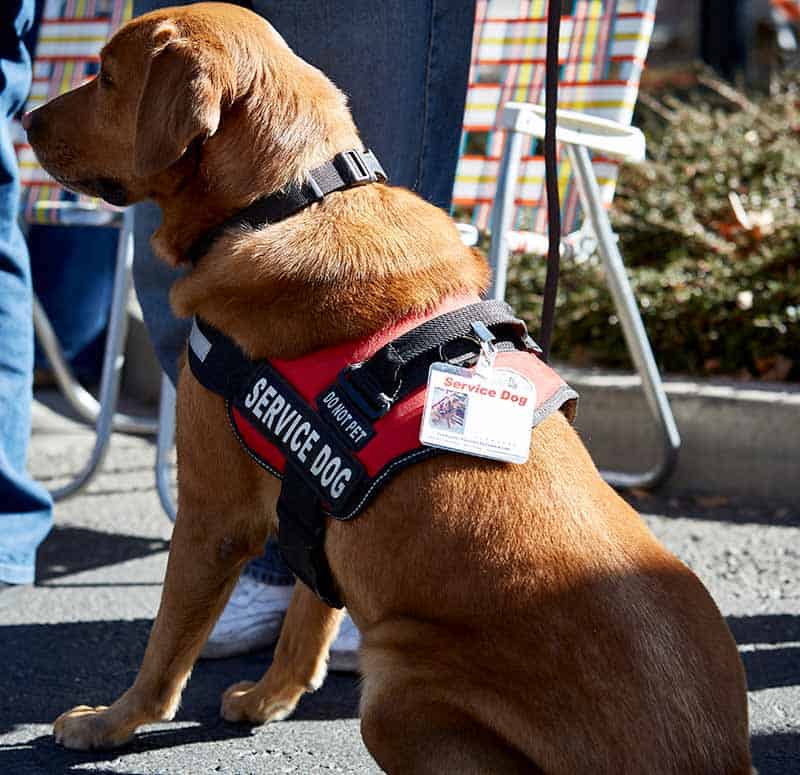Invisible Disabilities: Battling the Service Dog Stigma
 If you’ve ever seen a service dog helping a visually impaired person or someone in a wheelchair, you probably marveled at the interaction between dog and owner. The dog’s loyalty is heartwarming, and it’s inspiring to see how their services can help people lead more independent lives.
If you’ve ever seen a service dog helping a visually impaired person or someone in a wheelchair, you probably marveled at the interaction between dog and owner. The dog’s loyalty is heartwarming, and it’s inspiring to see how their services can help people lead more independent lives.
Did you know service dogs can also help people with disabilities that aren’t immediately obvious (also called invisible disabilities), such as post traumatic stress disorder (PTSD)? Unfortunately, reactions can be quite different when people see someone with a service dog who doesn’t appear to have a disability. This type of service dog stigma can lead to discrimination against handlers who struggle with an invisible disability.
Service Dog Defined
According to the Americans with Disabilities Act (ADA), a service dog is one that’s been trained to do work or perform tasks for people with disabilities. Service dogs also receive extensive training (usually up to 2 years).
Besides easing visible disabilities, service dogs can also assist people who suffer from anxiety, mental impairment, diabetes, seizure disorders, and other invisible disabilities. Some of the services performed by these dogs include:
- Warning their handler of an oncoming psychiatric episode
- Reminding their handler to take prescribed medication
- Turning on lights or performing room/safety checks
- Providing a calm, comforting presence during a psychiatric episode
- Alerting a diabetic handler to a dangerous drop in blood sugar
- Predicting and responding to a seizure
- Seeking help in the event of an emergency
Service Dog Stigma
Unfortunately, service dog handlers with invisible disabilities often face even more discrimination than those with more obvious impairments. Recent studies suggest that nearly half of those surveyed with visual disabilities report facing discrimination, while those with invisible disabilities report experiencing significantly more discrimination, such as:
- Being challenged about the legitimacy of their service dog or disability
- Being asked to prove they have a disability
- Being asked to prove their dog is a “real” service dog
- Being asked to leave an establishment or otherwise harassed
Although the ADA states that service dogs do not require documentation and are permitted in all public areas and businesses, the service dog stigma that so often accompanies an invisible disability can create significant mental and emotional stress for handlers. It may even interfere with a person’s decision to use a service dog altogether.
What You Can Do
Education is the best way to address service dog stigmas. The more we can raise awareness around the importance of service dogs, the better informed people will become about their role in assisting those with all types of disabilities.
If you have additional questions about service animals, please contact the team at Beverly Hills Veterinary Associates.
